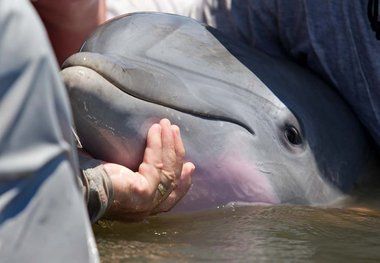
There continues to be concern that the high numbers of dead animals, especially the dolphins and whales, may be linked in some way to health problems either caused or exacerbated by toxic chemicals left behind by the BP Gulf oil spill.
The new tally comes as BP prepares to defend itself in federal court against charges it violated the Oil Pollution Act and the Clean Water Act.
In October, National Oceanic and Atmospheric Administration scientists announced that tests on five of 21 bottlenose dolphins found dead in Louisiana waters or stranded on beaches since February 2010 showed they were infected with brucellosis, a bacterial infection more often linked to death of cattle, bison and elk in the United States.
But the researchers said it was still unclear whether the spilled oil played a role in the deaths by making the animals more susceptible to the marine strain of the Brucella bacteria, which caused the brucellosis.
There's more evidence that a number of this year's turtle deaths are the result of other causes, especially from being hit by boat propellers or caught in nets or tangled in fishing line.
NOAA Fisheries' Office of Protected Resources has reported 660 marine mammal strandings in the Gulf, including dolphins and whales, since Feb. 1, 2010, which it cites as the beginning of this most recent three-year stranding incident in the Gulf.
But the statistics also show that the number of marine mammal strandings has increased dramatically since the spill. There were 114 strandings between Feb. 1 and April 29, 2010, which was considered to be prior to the response phase of the spill.
Between April 30 and Nov. 2, considered the initial response phase when the most oil was known to be in the water, there were 122 strandings or animals reported dead offshore. Since Nov. 3, 2010, there have been 424 marine mammal strandings.
State officials last week said the most recent statistics may not include two dead dolphins and one turtle that washed up in Louisiana last week with visible signs of oil on them.
Although researchers admit statistics involving strandings before the past two years are less than complete, NOAA has documented an average of about 70 marine mammal strandings a year between 2002 and 2009, much smaller than the numbers recorded during the last three years.



Reader Comments
to our Newsletter